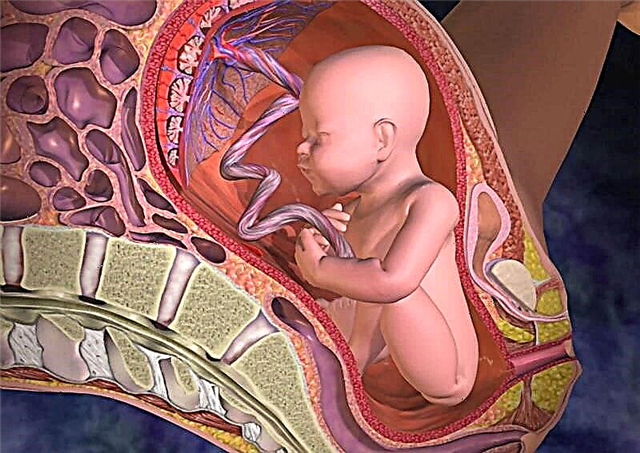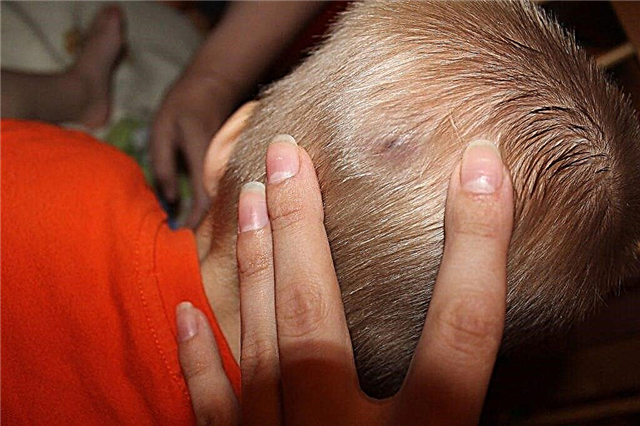Hormonal rash in newborns, or infant acne, affects one in ten children. Such rashes are not ignored, parents are worried that this will harm the baby's health. It also spoils the appearance of the face. Adults turn their worries to pediatricians and try to find answers in a variety of sources.

Baby's face and neck in a rash
Acne in newborns
This condition in children is caused by a hormone that they receive in utero through the umbilical cord. In the last months of pregnancy, the female body begins to actively release a large amount of estrogen. It is absorbed by the fetus. During breastfeeding, hormones pass through the stomach with milk.
On the face and body of the newborn, a large number of small rashes with a white core inside are observed. They spread not only in the head area, but also behind the ears, under the hair, on the face. The pustules are slightly inflamed, the halo is pink.
Important! Neonatal rashes independently disappear by the third month of development of the baby.
Differences between neonatal and allergic rashes
A hormonal small rash in a baby resembles an allergy. However, these states differ from each other. They are as follows:
- With allergies, itching and flaking of the skin is observed.
- Neonatal acne is similar to teenage acne.
- An allergic reaction occurs abruptly, after contact with an allergen, and pustules appear in small rashes in different places gradually.
- Acne does not cause discomfort in the child. The rash goes away in one place and appears in another.
- Red nodular points are localized only in the head area, the allergy spreads throughout the body.
- In case of allergies, the baby will try to scratch the area with a rash.
Neonatal pustulosis does not cause any anxiety in children; they continue to eat, sleep and develop normally. During allergies, babies are capricious, the itching prevents them from sleeping and eating. To ascertain the assumptions, you need to consult a pediatrician.
Important! A hormonal rash is not always full inside, sometimes it is visually invisible, manifests itself as a roughness on the face.
Symptoms of hormonal rashes
Hormonal acne in newborns has its own manifestations and symptoms. Young mothers need to know what the problem looks like. The main symptoms are:
- Small comedones, filled with a yellowish liquid, appear on the face.
- There is a blockage of the sebaceous glands, the child's face shines.
- The rash resembles adolescent acne, hormonal acne.
- The size of each papule is 1-2 mm, they are no more.
- Slight swelling of the genitals in infants.
- Rarely, the rash spreads to the groin area.
Distinguishing pustules in newborns is easy. It has characteristic features that even an inexperienced person can recognize. Babies often have these rashes. They usually do not require medical attention. By the age of three months, acne disappears on its own.
The first signs of a rash begin 2–3 weeks after birth. Since at this age the doctor conducts a monthly examination of the newborn, he will immediately pay attention to such a problem and determine its cause.

Kid with acne and green collar
Differential diagnosis
Hormonal acne rashes in infants should be diagnosed by a specialist. Only a doctor will be able to make an accurate diagnosis, after talking with the parents, he will establish the cause of this condition. To determine neonatal acne, you will need to undergo a series of tests:
- examination by a dermatologist;
- dermatoscopic examination of the rash site;
- determination of the acidity level of the skin;
- examination of the child's DNA map;
- TANK sowing the contents of the skin sac;
- biochemical study of blood serum;
- a blood test for sex hormones and thyroid hormones.
The above tests will be enough to determine the nature of the rash on the face of the newborn. Pustulosis is not bacterial, viral or fungal in nature. Thus, the child's body responds to adaptation to the surrounding world.
Important! It is forbidden to self-medicate, this can lead to a deterioration in the baby's condition.
Causes of neonatal pustulosis
Hormonal pimples in newborns on the face occur for several reasons. They are physiological and do not cause health problems. These include:
- Increased secretion of estrogen from the mother. The hormone enters the child's body and stimulates the active work of the sebaceous glands. Their blockage occurs, pimples appear on the face.
- If a mother is often nervous while breastfeeding, her body's levels of the hormone cortisol rise. It passes into milk, and then into the baby's body. Cortisol builds up in it and triggers the secretion of sebum.
- Failure to comply with the rules of hygiene of newborns. According to the doctor's recommendations, children are bathed every day at the same time. If you rarely wash the baby, then the skin pores become clogged with sebaceous secretions, they become dirty, and acne appears.
These are the three main reasons why neonatal pustulosis occurs. People often call it "bloom". This speaks of the maturation of the child's body and the restructuring of the hormonal background.

Sleeping baby face
Do I need treatment
Hormonal rashes in newborns are not treated with special means. In an infant, this is a physiological phenomenon. Experts put forward recommendations for care that will help speed up the process of restoring the sebaceous glands:
- The baby is bathed daily in water with a temperature of 370C, a decoction is added, the head and face area is wiped with a damp towel.
- The children's room is ventilated at least 2 times a day.
- Arrange air baths for the child.
- In summer, babies are allowed to sunbathe, but no more than 15 minutes a day.
- They monitor the humidity level in the room, it should not be lower than 60%.
- They dress the baby for the weather, try to limit tight swaddling.
All these measures will help restore the balance of the newborn's skin. If you follow all the tips, children's skin becomes healthier in 1.5-2 weeks.
Important! If baby acne does not go away until 6 months, it is worth examining its hormonal background.
What not to do
A hormonal rash on the baby's face requires special care. There are contraindications that can harm the baby:
- It is forbidden to squeeze out pimples - you can make an infection.
- It is impossible to wipe the skin of the face of the crumbs with alcohol solutions, the vapors enter the lungs.
- Doctors do not allow infants to drink herbal decoctions and medicines without consultation.
- Rubbing the skin on the face with powder disrupts the normal functioning of the sebaceous glands.
If acne in a newborn bothers parents, then a doctor will help find a solution. Do not listen to the advice of strangers. The parents are responsible for the child.
How to properly care for baby's skin
Hormonal facial acne in newborns is rarely seen if parents take proper care of their skin. Helpful hints:
- While bathing, add 1 g of potassium permanganate crystals to the water. They dry out the skin. Such baths are done every 3 days.
- Wipe the baby's face with a damp cloth.
- It is forbidden to touch the acne with your hands or try to squeeze it out, you can get an infection.
- Lubricate acne on the face with an ointment containing dexpanthenol, it stimulates healing.
- Every day they take the child out for a walk, this has a positive effect on the skin.
- They dress the baby in clothes made of natural fabrics, which allows the skin to breathe.
- The child is allowed to lie naked for 10-15 minutes daily. It is good for the skin.
Hygiene of the newborn is the key to healthy skin. If the problem arises even with careful care, then its explanation is sought in hormone tests. In this case, it may indicate endocrinological diseases.

Acne in the baby all over the face
Preventive measures
Prevention of neonatal acne consists in maintaining children's hygiene. During pregnancy, it is necessary to undergo examinations and drink all prescribed medications. Hormonal surges when carrying a baby cause skin rashes in the crumbs in the future. It is also necessary to follow a diet for pregnant and lactating mothers.
Hormonal acne in newborns often scares young parents. In fact, this is a physiological condition that goes away on its own by the age of three months. There is no special treatment for the rash, it is required to observe the rules of hygiene and maintenance of the newborn.



